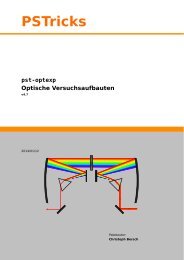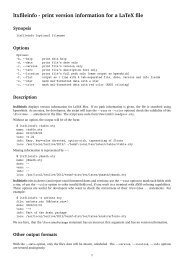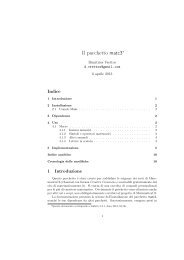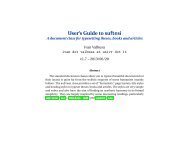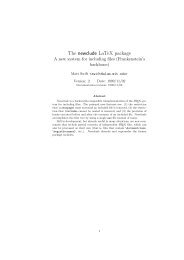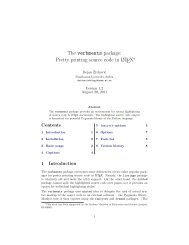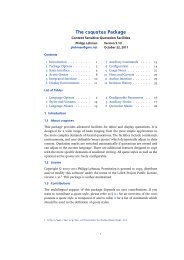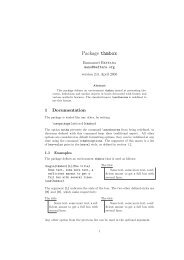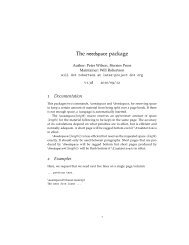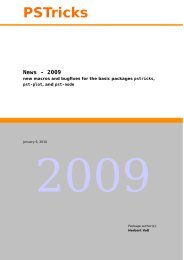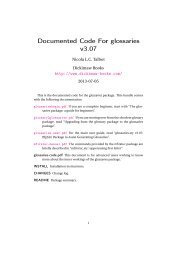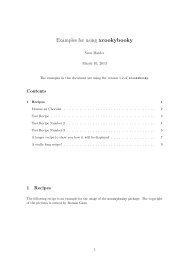You also want an ePaper? Increase the reach of your titles
YUMPU automatically turns print PDFs into web optimized ePapers that Google loves.
588 \eq@dump@box\unhbox\EQ@box<br />
589 \@@par<br />
590 }<br />
25 Special processing for end-of-equation<br />
At the end of a displayed equation environment we need to peek ahead for two<br />
things: following punction such as period or command that should be pulled in<br />
for inclusion at the end of the equation; and possibly also an \end{proof} with<br />
an implied “qed” symbol that is traditionally included at the end of the display<br />
rather than typeset on a separate line. We could require that the users type<br />
\qed explicitly at the end of the display when they want to have the display take<br />
notice of it. But the reason for doing that would only be to save work for the<br />
programmer; the most natural document markup would allow an inline equation<br />
and a displayed equation at the end of a proof to differ only in the environment<br />
name:<br />
... \begin{math} ... \end{math}.<br />
\end{proof}<br />
versus<br />
...<br />
\begin{dmath}<br />
...<br />
\end{dmath}.<br />
\end{proof}<br />
. The technical difficulties involved in supporting this markup within L ATEX 2e<br />
are, admittedly, nontrivial. Nonetheless, let’s see how far we can go.<br />
The variations that we will support are only the most straightforward ones:<br />
\end{dmath}.<br />
\end{proof}<br />
or<br />
\end{dmath}.<br />
Perhaps a comment<br />
\end{proof}<br />
. If there is anything more complicated than a space after the period we will not<br />
attempt to scan any further for a possible \end{proof}. This includes material<br />
such as:<br />
\begin{figure}...\end{figure}%<br />
\footnote{...}<br />
\renewcommand{\foo}{...}<br />
\par<br />
40



